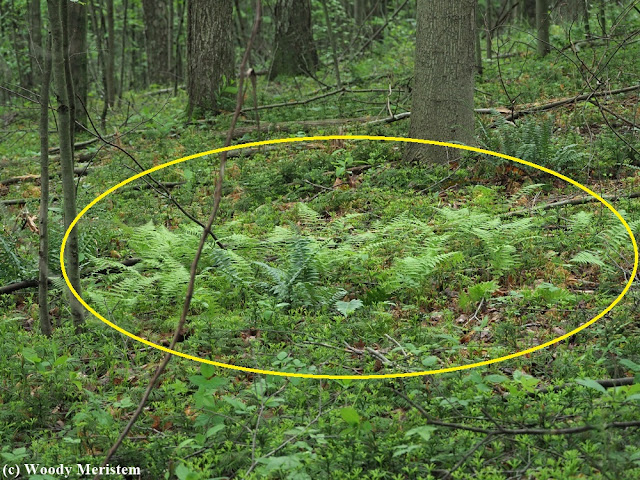One morning in late May I decided to head for the hills – the Muncy Hills that is. I’ve written about the Muncy Hills in previous posts, specifically this one from last year about a search for pink lady’s-slipper.
It was time to search for those beautiful orchids once again in the area where, in June 1978, I’d found a huge colony of pink lady’s-slipper –
Up
through the remnants of the old red pine plantation and into a stand
of black birch and red maple. There was the first lady’s-slipper
plant, two leaves, but no flower –
The search continued until
11 plants had
been
found, but only two had bloomed. One of those plants had a
dried-up/wilted
flower, the
other had
a year-old seed capsule side-by-side with this year’s
dried-up/wilted
flower –
From hundreds, perhaps thousands, of plants in bloom on June 8, 1978 to only 11 plants of which only two had bloomed in early May in 2024. Old records indicate that many plants are blooming a couple of weeks earlier than they did 150 years ago, here we had pink lady’s-slipper blooming a month earlier than they did a mere 46 years ago – thanks climate change!
So down the hill I went until – from almost beneath my foot burst a female ovenbird, the small warbler that looks like a miniature thrush. She went into a broken-wing act –
Ovenbirds build a well-camouflaged domed nest resembling an earthen oven on the ground. This is one I found several years ago –
I cautiously looked for the nest, being careful to only step in open spots where the ground was flat, but couldn’t find it among the fern, crowsfoot and fallen leaves. Taking a seat against one of the birch trees with good view of the area where the nest was located ...
... it was a matter of waiting to see if the female would return; so I donned a camo face mask and draped a sniper’s veil over my shoulders and arms. Twenty minutes later there she was, having flown into the lower limbs of a small hemlock –
-DeNoiseAI-standard.JPG)
The ovenbird was very cautious and wary, but eventually descended to the ground where she was hard to see among the ferns and crowsfoot. I had but one glimpse of her before she vanished –
Now that she was back on the nest, it was time to quietly pack up and head back to the car.
%20-%20June%201978-DeNoiseAI-standard.JPG)
.JPG)
.JPG)
-DeNoiseAI-standard.JPG)
-DeNoiseAI-standard.JPG)
%20-%20nest.JPG)

-DeNoiseAI-standard.JPG)
-DeNoiseAI-standard.JPG)
-DeNoiseAI-standard.JPG)
-DeNoiseAI-standard-DeNoiseAI-standard.JPG)
Wow, the Lady Slippers in 1978 were so plentiful and looking beautiful. Love the Ovenbird, he is a common bird seen and heard in the forest next to our home. Great photos.
ReplyDeleteThank you for linking up and sharing your post. Take care, have a great weekend.
We always saw this flower in the mts of NC. It really is beautiful in the forest. How amazing that you saw so many years ago and sad that there are so few now. Love the Ovenbird!
ReplyDeleteLove the Ovenbird! Its call is one of the most common bird calls here in the spring, but its nest is so well camouflaged it's rarely found. A bird you hear a lot more often than you see it.
ReplyDelete